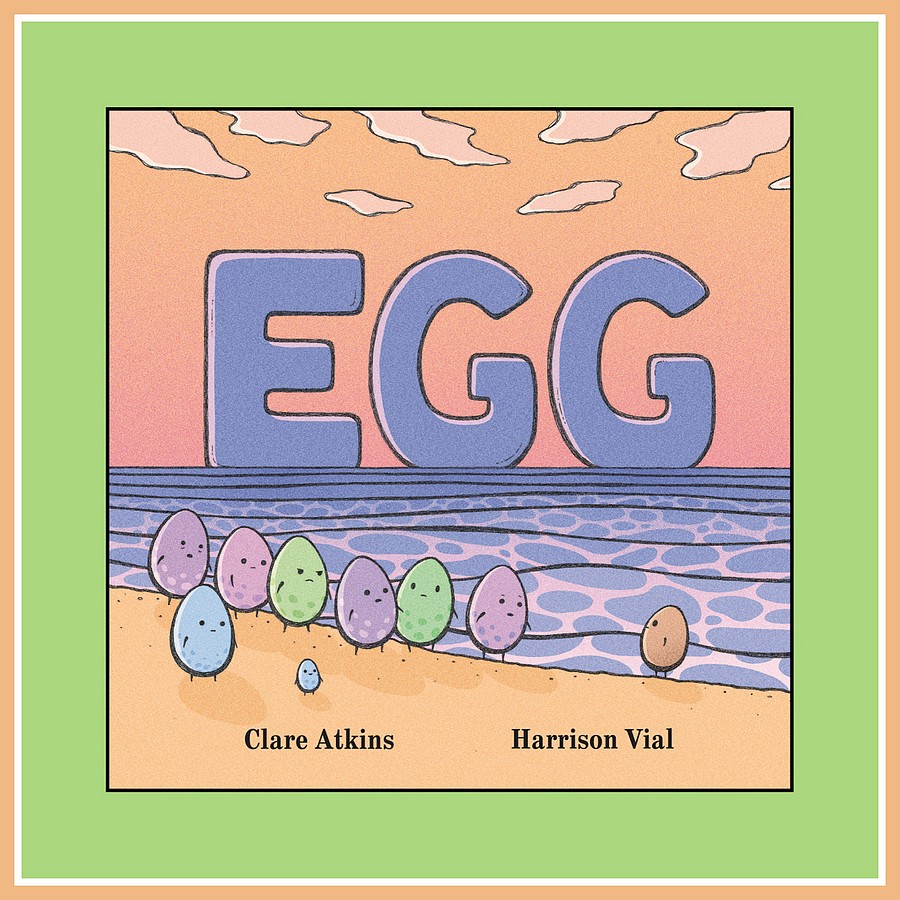
Title: Egg
Author: Clare Atkins
Illustrator: Harrison Vial
Publisher: University of Queensland Press – UQP
Publication date: 2 August 2022
Themes: Belonging, refugees, xenophobia, discrimination, fear of the unknown, kindness, acceptance and climate change
Additional notable information: Teachers’ notes can be downloaded from the UQP website here
Egg by Clare Atkins and illustrated by Harrison Vial is a beautiful, thought provoking and highly engaging fable with a cast of eggs as characters; eggs with distinct personalities, thoughts about their island home and firm opinions about what happens when a newcomer washes up on their island. This beautiful picture book cleverly juxtaposes the past when the world was not impacted by climate change with present times where the island in the story has suffered environmental damage. The story explores how solutions to environmental problems are possible, it just takes one good egg to be brave and that could be the first step to making a difference, one that may benefit a whole community. It is in this idea that using eggs as characters is a genius masterstroke as eggs are symbolic of life and rejuvenation of the life cycle. The beauty of this deceptively simple picture book is that it can be read on so many levels and will serve as an excellent segue into rich discussions as a multitude of themes are explored, including belonging, refugees, xenophobia, discrimination, fear of the unknown, kindness, acceptance and climate change.
In this story, a group of eggs spot what at first glance appears to be another egg in the ocean heading towards their land. At this sight suspicions are aroused, questions are asked, observations are made. The overwhelming desire is to get an answer as to who, or what, is this new visitor. Theories are put forward by the egg inhabitants, more questions are raised than answers found. The threatened eggs, quickly develop an us-versus-them (in this case the new arrival) mentality, leading to division and marginalisation for the newcomer, who becomes known as Strange Egg. The thoughts of the egg inhabitants become negative about Strange Egg. Interestingly, it is Little Egg, the smallest of all the eggs who critically reflects and sees more similarities than differences. The fear of the unknown drives the egg inhabitants to reject Strange Egg. With an open mind, inquisitive nature and kind heart, Little Egg is keen to learn more about Strange Egg. A friendship blossoms between the two and so do other riches that come from one courageous person standing out from the crowd, going against the status quo, taking risks and embracing change. With this risk come rich and unforeseen rewards. Little Egg is also able to be a leader and encourage the rest of the egg community to befriend Strange Egg and appreciate the gifts Strange Egg has to give. Little Egg’s actions have a ripple effect in the egg community and for their island.
The eggs’ attitudes and emotions are perfectly captured in the lively illustrations which enrich the narrative.
This book would make a perfect read aloud as there are different perspectives and themes readers will be able to connect to. There are also a gamut of emotions conveyed in this story which lends itself to reading the book with different voices and expressions, making it a most memorable and engaging experience. This story also serves as an excellent gateway into rich discussions about the many themes explored as well as considering solutions to not only environmental, but other issues, for example, poverty or discrimination.
